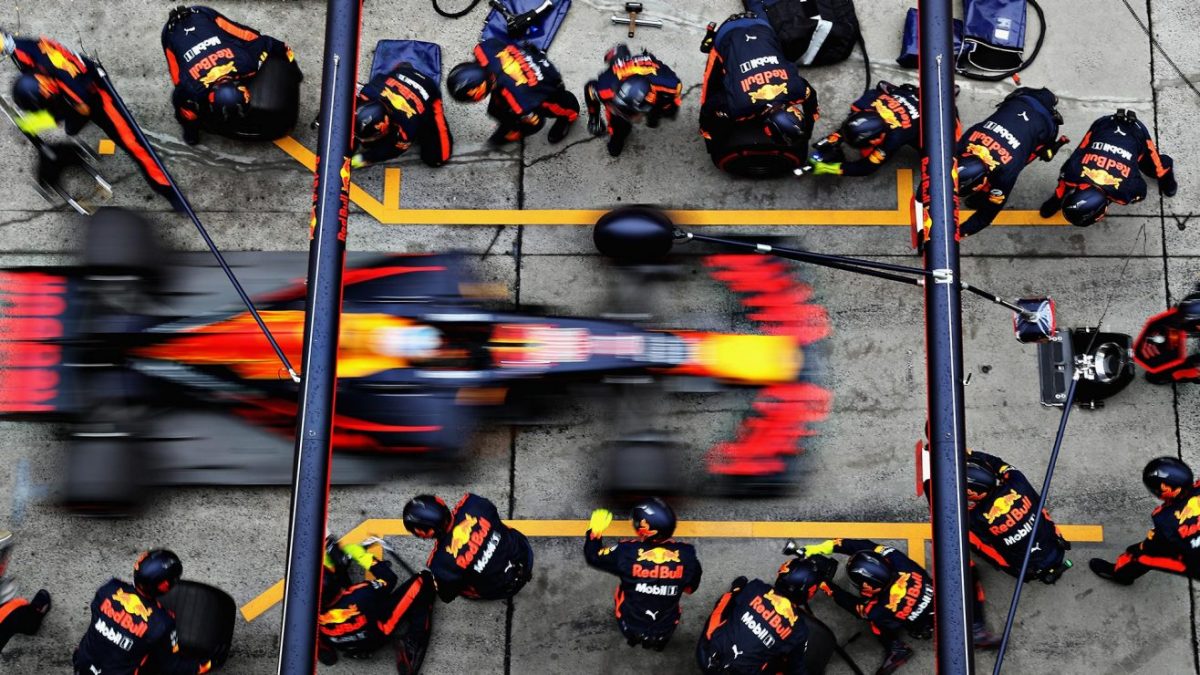The far-reaching implications of the Formula 1 business model
Formula 1 is one of the most technical and innovative industries in the world. Due to the highly competitive and rapidly changing nature of the sport, the formula 1 teams have become well equipped at quickly imagining, testing, developing, and implementing new innovations to be fitted on their cars to gain milliseconds on the racetrack. This makes the business models of formula 1 teams highly responsive and very inventive. Over the years these race cars have developed from very light, frail, powerful machines to extremely high-tech digital systems with over 300 sensors, which measure approximately 1.1 million telemetry data points per second, with a car producing over 3 terabytes of data over the course of a 1.5-hour race (Miller, 2022).
The teams obviously develop technology to improve the race cars performance, but it turns out that many of these technologies can have applications elsewhere. Most obviously, many technologies developed for F1 have ended up in road cars, things like energy recover, regenerative braking and hybrid powertrains all started life in a formula 1 car and later found useful application in road cars (Ahmad, 2022). More surprisingly, F1 derived tech is used in a variety of unrelated applications worldwide. F1 derived is also used in developing a 5G infrastructure for roads and public transport in large cities for example. The servers specifically made for F1 have also proved useful in hospitals as they have been made very durable to travel around the world every other weekend and be resistant to high volumes of carbon fiber dust (Kanal, 2019). Formula 1 tech has also proven to be lifesaving, as McLarens data collection systems are now used in UK hospitals. The first trial of this was in Birmingham Hospital in 2012, traditional medical devices included paper charts, 4 checkups an hour where vitals were checked but not continuously tracked and monitered. McLarens data services however were designed to be able to handle a constant inflow of large amounts of data coming from the formula 1 car during a race. When it came to Damian Singh, a 4 your old who had just suffered cardiac arrest, the Birmingham Children’s Hospital consulted McLaren and together designed an F1 derived data system that would consistently track all Damian’s vitals through different sensors. This allowed doctors to more accurately track Damian’s health and allow for a better recovery (Wakefield, 2012).
The responsive and inventive nature of F1 teams is best illustrated through ‘Project Pitlane’, one of the most ambitious and impressive projects Formula 1 teams have undertaken. Project pitlane was a project where different F1 teams collaborated with each other and with different health institutions. This was to aid in the creation of new breathing apparatuses and help in the scaling production of said apparatus at the beginning of the COVID-19 pandemic. The flexibility and inventiveness of F1 teams employees and facilities were used to turn a CPAP machine into something closer to the complex breathing apparatuses needed at hospital. Not only was this developed but was also brought to Technology Readiness Level 9 (fully qualified & deployed in an operational environment) within 4 weeks, something that usually takes 2 years. Many different teams also put in different efforts, such as Williams Racing reverse-engineering and 3D modelled smiths ventilators to speed up the production of these ventilators. There are many more things F1 teams did during this period that significantly aided the global fight against the pandemic (n.d. 2020).
It is incredible to see an industry that has nothing to do with health care, but the innovative nature and technical capabilities of these F1 teams to aid in such a crucial time. Proving that the unique business model of F1 teams is ready to take up almost any technological challenge, and they also have some of the most advanced technology and information systems to deliver quick results.
References:
Ahmad, K. (2022, June 23). 7 times F1 Tech ended up in your road car. MUO. Retrieved October 4, 2022, from https://www.makeuseof.com/f1-tech-in-road-car/
n.d. (2020, November 12). F1 expertise provides life-saving breathing devices in covid-19 fight as teams united for Project Pitlane. Formula 1. Retrieved October 4, 2022, from https://corp.formula1.com/f1-expertise-provides-life-saving-support-in-covid-19-fight-as-teams-united-for-project-pitlane/
Kanal, S. (2019, November 7). How F1 technology has supercharged the world: Formula 1®. Formula 1. Retrieved October 4, 2022, from https://www.formula1.com/en/latest/article.how-f1-technology-has-supercharged-the-world.6Gtk3hBxGyUGbNH0q8vDQK.html
Miller, R. (2022, March 2). How cloud data-crunching accelerates the F1 racing experience. Data Center Frontier. Retrieved October 2, 2022, from https://datacenterfrontier.com/how-cloud-data-crunching-power-accelerates-the-f1-racing-experience/
Wakefield, J. (2012, July 29). Formula 1 technology used in hospital. BBC News. Retrieved October 4, 2022, from https://www.bbc.com/news/technology-18982474


Watching almost all F1 races in the past couple years, I would have never thought that the technological developments in the racing sport can be found useful in completely different industries, that have nothing to do with the motorsport. Fascinating! It was also very interesting to read about the development of the cars over the years and the data collection, management and analysis progress. I also remember reading about Williams F1 team helping to create some energy saving technologies for the fridges that are used by the supermarkets, with the goal of making them greener. So yes, I agree, F1 is long far beyond just racing. I wonder though how much the technologies had to be adjusted to become financially feasible for the hospitals around the globe. F1 teams usually have large budgets and immense R&D teams, which are unlikely to be present at the hospitals, so I guess it would be interesting to see how this is achieved in real life.